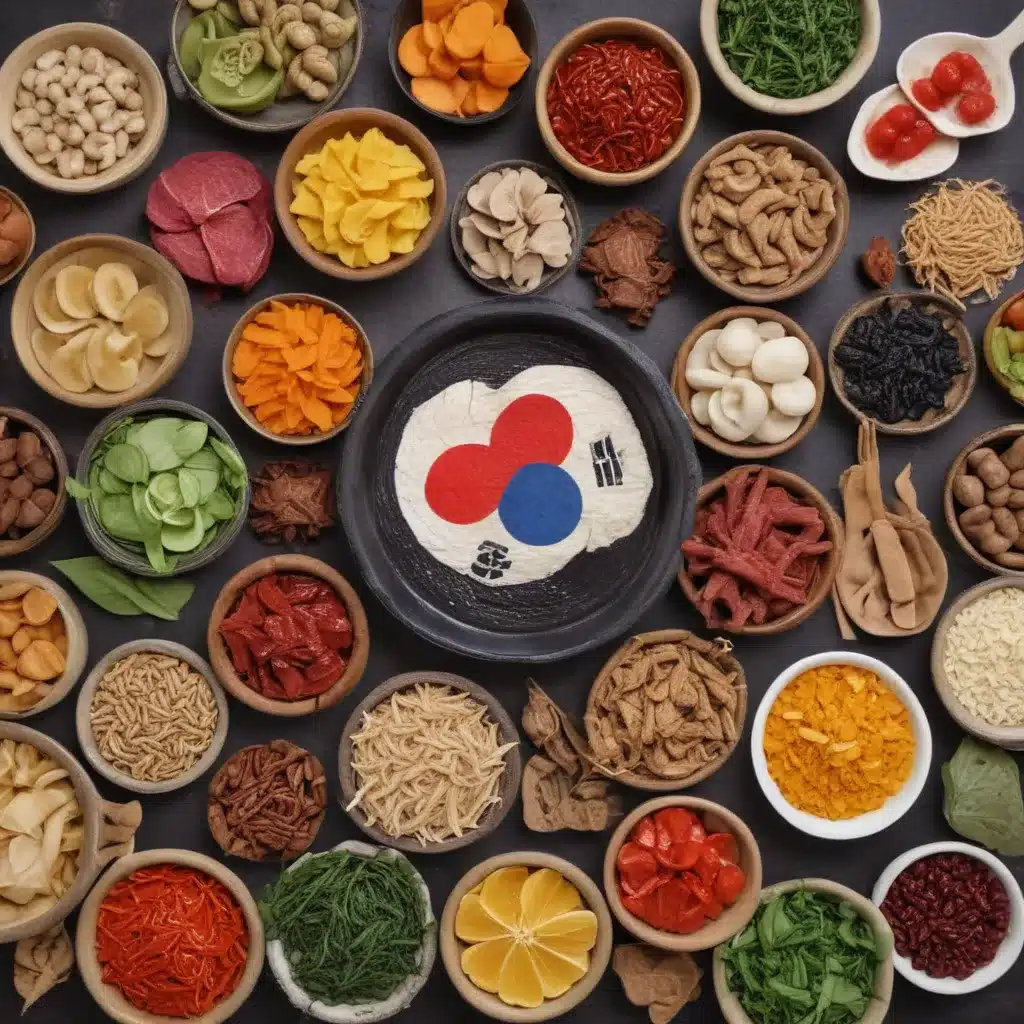
Unraveling the Mystery of Korean Cuisine
As someone who has always been curious about the vibrant and flavorful world of Korean cuisine, I can certainly empathize with the feeling of being overwhelmed by all the unfamiliar ingredients. From gochujang to gochugaru, Korean food can seem like a culinary minefield for the uninitiated. But fear not, my fellow food adventurers, for I am here to demystify the key components of Korean cooking and guide you on an exciting gastronomic journey.
Let’s start with the cornerstone of Korean cuisine: gochujang. This fermented red chili paste is the backbone of many beloved Korean dishes, from bulgogi to tteokbokki. Its umami-rich, slightly sweet, and deliciously spicy flavor profile adds an undeniable depth to any dish. Don’t be intimidated by its fiery reputation – gochujang can be easily incorporated into your cooking, whether you’re whipping up a quick marinade or simmering up a comforting stew.
Next on our list is gochugaru, the dried and ground Korean red chili flakes. This versatile ingredient adds vibrant color and a distinctive smoky-sweet heat to everything from kimchi to fried chicken. While gochugaru may pack a punch, it’s surprisingly versatile and can be used to add a touch of spice or a full-blown flavor explosion, depending on your preference.
Now, let’s talk about the unsung hero of Korean cuisine: doenjang. This fermented soybean paste is the secret weapon in many Korean dishes, imparting an earthy, funky, and deeply savory flavor that’s simply impossible to replicate. Whether you’re whipping up a hearty stew or marinating meat, a little bit of doenjang goes a long way in elevating your culinary creations.
Of course, no discussion of Korean ingredients would be complete without mentioning the ever-popular kimchi. This fermented cabbage (or radish) dish is a culinary chameleon, serving as a side, a condiment, or even the star of the show. The salty, sour, and spicy flavors of kimchi can add a delightful zing to everything from fried rice to grilled meats.
But Korean cuisine extends far beyond these well-known staples. Let’s dive a little deeper and explore some lesser-known, yet equally captivating, ingredients:
Exploring the Lesser-Known Gems of Korean Cuisine
One such ingredient that deserves a spotlight is ssamjang, a savory and slightly sweet dipping sauce that’s a staple in Korean barbecue. This blend of doenjang, gochujang, garlic, and other seasonings adds a complex and irresistible flavor to grilled meats and vegetables.
Another hidden gem is perilla leaves, also known as kkaennip. These fragrant, slightly minty leaves are often used as a wrap for Korean barbecue, adding a delightful freshness to balance out the rich and smoky flavors. But perilla leaves are also used in a variety of other dishes, from kimchi to salads, showcasing their versatility.
Finally, let’s not forget the humble, yet mighty, Korean radish. Known as mu, this crunchy vegetable is the star of countless Korean side dishes and banchan (small shared plates). Whether it’s pickled, sautéed, or added to soups, the Korean radish adds a refreshing crunch and a subtly sweet flavor that can elevate any meal.
Korean Garden, a beloved Korean cuisine destination in Boston, has mastered the art of showcasing these captivating ingredients. Their menu is a delightful exploration of traditional and modern Korean flavors, inviting you to embark on a culinary adventure that will leave your taste buds thoroughly delighted.
Embracing the Versatility of Korean Ingredients
One of the most remarkable aspects of Korean cuisine is its incredible versatility. These ingredients aren’t just limited to their traditional applications – they can be seamlessly incorporated into a wide range of global culinary styles, opening up a world of possibilities for the adventurous home cook.
For instance, have you ever considered using gochujang in your next burgers or tacos? The bold, umami-rich flavor of this Korean chili paste can add a delightful twist to your favorite Western dishes. And don’t be afraid to experiment with gochugaru beyond Korean recipes – a sprinkle of these fiery flakes can liven up everything from roasted vegetables to marinades.
Doenjang, with its earthy and complex flavor profile, can also be a game-changer in vegetarian and vegan dishes. Try using it as a base for a creamy pasta sauce or as a seasoning for plant-based protein sources. The possibilities are truly endless when you start to think outside the traditional Korean culinary box.
And let’s not forget about the humble kimchi – this fermented wonder can be repurposed in so many unexpected ways. Kimchi fried rice, kimchi pancakes, and even kimchi tacos are just a few examples of how this versatile ingredient can be used to add a delightful twist to your favorite recipes.
Embracing the Journey of Discovery
The world of Korean ingredients is a vast and captivating one, filled with flavors that can transport you to the vibrant streets of Seoul or the lush countryside of Jeju Island. While it may seem daunting at first, I encourage you to embrace the journey of discovery and let your taste buds be your guide.
Start by experimenting with one or two new Korean ingredients at a time, and don’t be afraid to make mistakes. The joy of cooking lies in the process of exploration, and Korean cuisine is the perfect canvas for your culinary adventures. Who knows, you may just uncover a new favorite ingredient or a dish that becomes a staple in your household.
Remember, the beauty of Korean cuisine is in its ability to adapt and evolve. So, go forth, my fellow food enthusiasts, and let your creativity run wild. Discover the wonders of gochujang, gochugaru, doenjang, and kimchi, and let them transform your cooking in ways you never imagined. The culinary journey awaits, and Korean Garden is here to guide you every step of the way.
